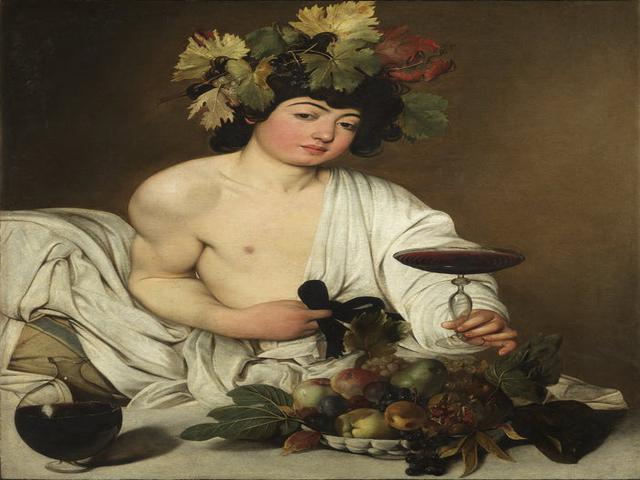Spleen

The painting is part of Caravaggio's series of half-length portraits, which includes works such as "Boy with a Basket of Fruits" in the Borghese Gallery in Rome, "Boy Bitten by a Lizard" which belongs to the Longhi Collection in Florence and “Basket of Fruits” in the Pinacoteca Ambrosiana in Milan. A leading figure in Rome in the 1610s of the artistic revolution that spread throughout Europe, in this painting, Caravaggio demonstrates a masterful naturalistic depiction of still life. His depiction of the basket of fruits and the cup of wine offered by the god is surprising, with elements that some critics interpret as an invitation from Horace to frugality, conviviality and friendship. The sculpted figure of Bacchus with a dazed expression due to the Drunkenness reproduces models from classical art, particularly the portraits of Antinous, and is inspired by a languid sensuality. In painting, the eminent art critic Mina Gregori detected a certain vision of antiquity that celebrates the freedom of the senses, as well as a reference to the Bacchic costumes and initiation rites practiced in Rome. Discovered in the Uffizi repositories in 1913 and attributed to Caravaggio by art historian Roberto Longhi, the masterpiece belongs to the painter's early career in Rome, when he was under the patronage of Cardinal Francesco Maria del Monte. Together with the "Medusa" (inv. 1890 n. 1351), it was donated by Cardinal del Monte to Ferdinando I de' Medici on the occasion of the wedding of his son Cosimo II in 1608.
© Tourblink